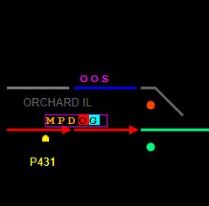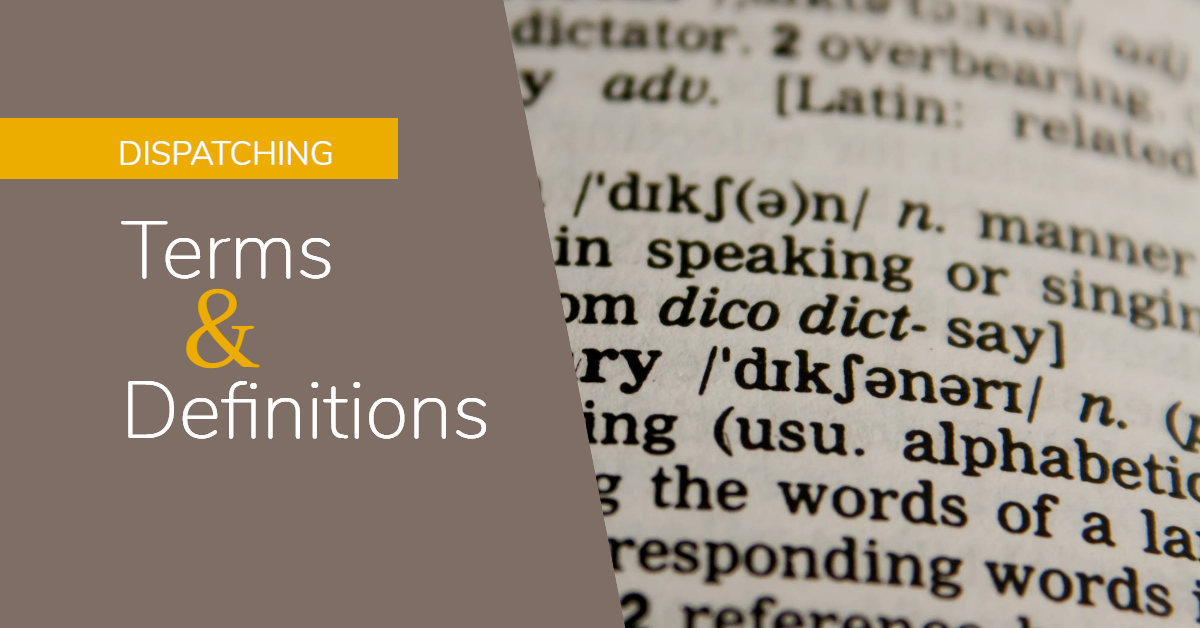Train dispatching is a big deal: it’s what allows trains to move efficiently across a rail network…and to do so safely. But it’s also as complicated as it is important. Dispatching isn’t something that can be learned overnight (in fact, it typically takes train dispatchers a year to be fully trained), but understanding some of the basic terms is a good start. Here’s your beginner’s guide to train dispatching terminology.
Dispatch
In railroading, to dispatch means to give a conductor orders for when, how far and how fast a train can travel.
Dispatcher
A railroad employee who is responsible for directing the movement of trains within a specified territory. Dispatchers are responsible for ensuring trains and crews move safely and efficiently across a railroad’s network and for making sure no train is delayed unnecessarily. More specifically, dispatchers identify which trains should move through which corridors, and at what speed, as well as what trains must move to a siding to let another pass. They do so by controlling an extensive system of electronic signals that act as stoplights to ensure operating safety.
Limits of Authority
How far and how fast a train is allowed to travel. Limits of authority are granted by dispatchers to conductors.
Conductor
A train conductor’s job is to manage the safety of the train. Dispatchers give orders directly to the conductor, who then issues orders to the engineer. It is a conductor’s job to ensure the engineer complies with safety regulations.
Engineer
Engineers are responsible for driving the train; i.e., the engineer is the person in the cab of a locomotive who literally pulls throttle on the train, ultimately carrying out the directions given by a dispatcher.
Centralized Traffic Control (CTC)
Centralized Traffic Control is a system used to authorize train movements between blocks. In this context, “blocks” are segments of track, not unlike a block on a city street. Using a block system, train dispatchers can authorize train movements from block to block. Similar to how green and red lights let drivers know they can or can’t proceed through an intersection, dispatchers can make a signal green by clicking a block, thus allowing a train to proceed. Thanks to improvements in these systems, dispatchers don’t have to click every single block to clear the signals (i.e., make them green). Now, dispatchers can click the block nearest to a train, then click the block where a train’s authority ends (i.e., where the train must stop) to clear all of the signals in between. With just two clicks, a dispatcher can clear all of the signals so trains have authority to move through the blocks.
Milepost
Just like a milepost sign on a highway, a railroad milepost indicates a specific location along the track. When dispatchers give conductors their orders (i.e., their limits of authority), part of that instruction includes at which milepost the train must stop.
Train meet
When two trains traveling toward one another on the same track are scheduled to meet. It is a dispatcher’s job to make sure train meets happen safely, typically by making a plan for one train to pull off on a siding so the train with the highest priority can pass through, or by having one train cross over to another main line.
Priority
Before it is dispatched, every train receives a priority — a ranking that determines which train takes precedence when two trains meet. In other words, if two trains need to use the same track, the train’s assigned priority determines which gets to go first. Train priorities are determined by the train type. For instance, passenger trains are typically given highest and manifest trains (trains with various car types destined for various customers) the lowest.
Main line
Main lines are a railroad’s primary or most heavily used tracks. Main lines are literally the “main lines” on which trains travel for the majority of their trip, similar to how cars travel on a highway or interstate.
Multiple main tracks
Two or more main tracks (aka main lines) that run parallel to each other. When an area is forecast to see increased freight volumes, railroads build additional main tracks to accommodate increased traffic. Having multiple main tracks also makes a dispatcher’s job less complex, as they have greater flexibility for how to move trains and can do so more efficiently.
Cross Over
A cross over is a track that joins two main tracks. When a train moves from one main track to another, it "crosses over." When two trains traveling toward each other are scheduled to meet, a dispatcher will have one train cross over to the other main line so that they may pass safely without stopping. Or, if work is being performed on a main line, a train will cross over to the other main line to bypass the segment of track that is out of service. Once it passes, that train may cross back over to the original main line.
Siding
A section of track off of the main line that allows trains to pull off to the side. When two trains are scheduled to meet on a track, dispatchers pull one train off onto a siding so the other can continue traveling safely on the main line. Once that train has passed, the train on the siding can pull back onto the main line to continue its journey safely.
In the Hole
At the meeting point of opposing trains, one train "Holds the Main," the other "Takes the Hole" in a siding.
Hours of Service
The number of hours train crews are allowed to operate. Currently, the regulation requires railroads to cap shifts at 12 hours. Hours of service are important to dispatchers, as it is their job to ensure train crews arrive at their destination before their hours of service have run out.
Recrew
The crew used to bring a train into a terminal when the original crew has insufficient time to complete the trip and a second crew is necessary. It is a dispatcher’s job to ensure trains move efficiently so that recrews can be avoided.
Positive Train Control (PTC)
A safety system designed to monitor train movement and prevent train-to-train collisions and unsafe train movements like speeding, movement into established work zone limits without permission, and movement over an improperly lined main track switch. Although Positive Train Control can automatically slow or stop a train to prevent a collision, it is not a dispatching system.
Train ID
In order to track the movement of trains, each is assigned a train ID. Train IDs are comprised of initials that stand for the type of train, the origin, the destination and the date the train is scheduled to leave. For instance, a manifest train (M) originating in West Colton, California (WC) leaving for Englewood (EW) on the 28th of the month would have a train ID of MWCEW28. Train IDs help both dispatchers and customers track the movement of a train over a specified route.
Protective Track Tag
When a portion of a track is experiencing an issue, the dispatcher is provided the information and issues a protective track tag, which describes the problem. In this instance, a dispatcher cannot run a train on that portion of the track without providing the conductor specific rules for how to operate safely in that area. For instance, if a crossing gate is staying down even when a train isn’t present, a conductor may be asked to operate at a slower speed through that crossing. Ultimately, tagging a section of track with an apparent issue is intended to protect the track, thus the name “protective track tag.”
Track Block

An example of a train block on Union Pacific's CADX dispatching system. The blue line with "OOS" (out of service) above it shows dispatchers a train cannot safely pass on the track.
When a train block is in place, a dispatcher knows there is an issue and a train can’t move on that part of the track. When a track block is input into a dispatching system, it knows there is a block and reroutes the train as needed. But, as a failsafe, the system also graphically represents the block so dispatchers are aware of it. For instance, if a mudslide covered a segment of track and made it unsafe for a train to pass, in the Union Pacific CADX dispatching system, the train block is represented as a blue line with “OOS” (out of service) above it in red so it is clear to the dispatcher a block is in place.
Dark Territory
An area where there are no signals in the field. When a train travels through dark territory, conductors must keep a close eye on mileposts to ensure the train does not travel past its limits of authority.
Learn More
Want to learn more? Find out how train dispatching works. Or, if you have questions about dispatching or how to ship products by rail, get in touch.
Related Articles









